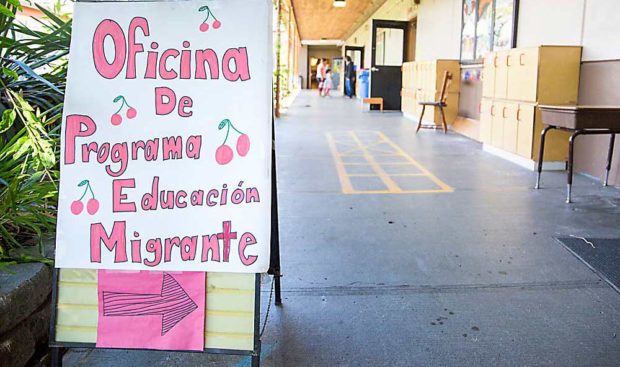
Several Columbia River Gorge cherry growers pitched in to make sure the children of their seasonal employees had a safe place to go every day while their parents worked in the harvest.
With the growers’ help, a local school service in The Dalles, Oregon, expanded this summer’s migrant education program, a combination of summer school, day camp and outreach, held at a local elementary school, for 300 or more children of traveling seasonal employees.
“In The Dalles, we’ve always prided ourselves in taking care of our people,” said Brenda Thomas, president of Orchard View Inc., the largest orchard company near the city of about 17,000 on the banks of the Columbia River in Oregon’s primary cherry production region.
Ensuring the children of migrant workers are cared for, educated and entertained crosses growing regions. Some fruit companies offer onsite child care programs. In northwestern Montana, the nonprofit Flathead Lake Migrant Education Program offers a site-based school program for children of migrant workers who pick cherries each summer. The program is funded through grants.

In the Columbia River Gorge, growers, irrigation companies and some grower organizations collectively contributed $6,800 to preserve the program there, said Jonathan Fost, director of the migrant summer program for the Columbia Gorge Education Service District.
That alone couldn’t pay for the five-week program, Fost said, but the donations allowed him to combine with some federal funding that doubled its length from 13 days to 26, making it worth the effort to hire teachers, schedule buses and plan out all the other functions to make it work. Specifically, the money is being used for paying rent at the school building and transportation.
Early every morning, before sunrise, buses pick up hundreds of children from nearby orchard work camps and bring them to Chenowith Elementary School for a morning of reading, math, coloring and recesses based on grade levels that resemble ordinary school.
In the afternoon, teachers organize enrichment activities such as crafts, acting, sports and folkloric dancing. Making things even more interesting, five of the teachers are visiting from Mexico as part of a professional exchange program.

The program is for elementary school students through age 12, too young to help work in the orchards or be left alone in the work camps.
“If they’re under 12, they’re going to be in the camps,” Fost said. “And here’s what happens sometimes: They’re unattended during the day.”
Children over age 12 usually tag along with their parents in the fields or find other things to do. However, Fost and the migrant education program have a plan for them, too, this year.
With the cooperation of a few of the growers, Fost and his migrant education staff are taking the program to middle school and high school students, offering credit recovery, giving kids the chance to catch up to their peers, and skills classes in the evenings at the work camps.

“This is new. We’ll learn how it works,” Fost said.
Growers, including Orchard View, are contributing space and staff time to support it “above and beyond” the daytime sessions at the school.
Orchard View, for one, relies on 800 seasonal employees who travel from California, Texas and elsewhere to make sure cherries are harvested on time. Neighboring farms are in the same boat. It makes sense for them to help out those families in return, Thomas said, calling it a communitywide effort.
“We want to make sure we invest in our people and make it a worthwhile experience while they are here,” she said. •
—by Ross Courtney






Leave A Comment